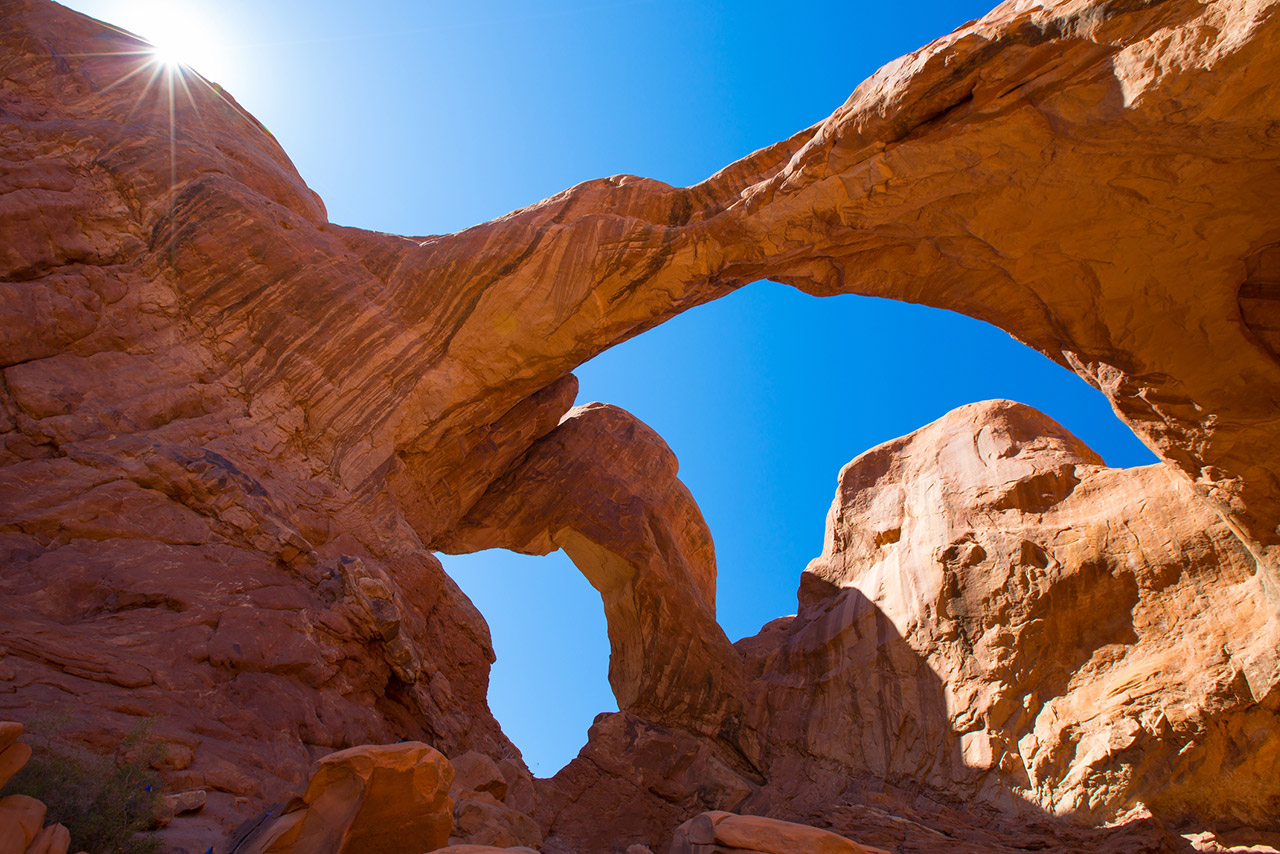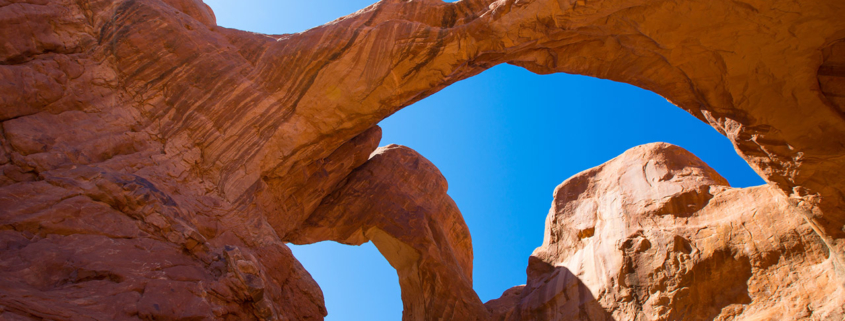THIS WEEKEND IN CHICAGO – Visiting Our National Parks!

This last weekend in May is usually the beginning of our outdoor summer festival season. Unfortunately, we’re still under stay-at-home orders here in Chicago. So, let’s go visit some of our National Parks – virtually, of course. Afterward, you may want to schedule an in-person visit for later in the year as our national parks are slowly opening in phases to the public again!
Arches National Park is in southeastern Utah with more than 2,000 natural sandstone arches spread across the park. It lies on top of a salt bed which underwent extreme climate changes millions of years ago.
The park’s Moab Fault is one of the most highly studied geologic zones in the country. Petrified sand dunes can also be found here, which indicate where ancient lakes covered the area. With its delicate and unique landforms, this park looks like it could be on another planet!
Badlands National Park is located 75 miles east of Rapid City, South Dakota. Not only is this park home to strikingly unusual rock formations, but it also is a hotbed for fossils. In addition to ancient remains, this park also hosts a variety of living wildlife such as bison, bighorn sheep, and prairie dogs on its 244,000 acres!
Wind Cave National Park, located in South Dakota, sits below a remnant island of intact prairie and is one of the longest and most complex caves in the world with 147 miles of mapped cave so far. Named for barometric winds at its entrance, this maze of passages is home to boxwork, a unique formation rarely found elsewhere. Wild Cave also has a vast surface to explore with hiking trails and wildlife viewing. Bison, elk, and other wildlife roam the prairie grasslands and forested hillsides of one of America’s oldest national parks!
Channel Islands National Park is composed of five remarkable islands and their ocean environment in Southern California, preserving and protecting a wealth of natural and cultural resources. Isolation over thousands of years has created unique animals, plants, and archeological resources found nowhere else on Earth!
Denali National Park is six million acres of wild land, bisected by one ribbon of road in Alaska. It’s also home to the tallest peak in North America – Mt. McKinley. Wild animals large and small roam unfenced lands, living as they have for ages. Solitude, tranquility, and wilderness await!
Mesa Verde National Park in Colorado was established in 1906 to preserve and interpret the archeological heritage of the ancient cliff dwellings of the Pueblo people, who lived in the area between 600 and 1300 A.D. The park today protects nearly 5,000 known archeological sites, including 600 cliff dwellings. These sites are some of the most notable and best preserved in the United States!
The granddaddy of them all, Yellowstone National Park was the first national park in the United States, established in 1872, and is widely believed to be the first national park in the world. Yellowstone remains an absolute jewel, sprawling across parts of Wyoming, Montana, and Idaho, featuring unique hydrothermal and geologic wonders. Thousands of hot springs, geysers, mudpots, and fumaroles dot this wild landscape. And the Old Faithful Geyser is perhaps the most famous geyser in the world known for its regularity of eruptions!
Sue Moss and Dean’s Team Chicago

